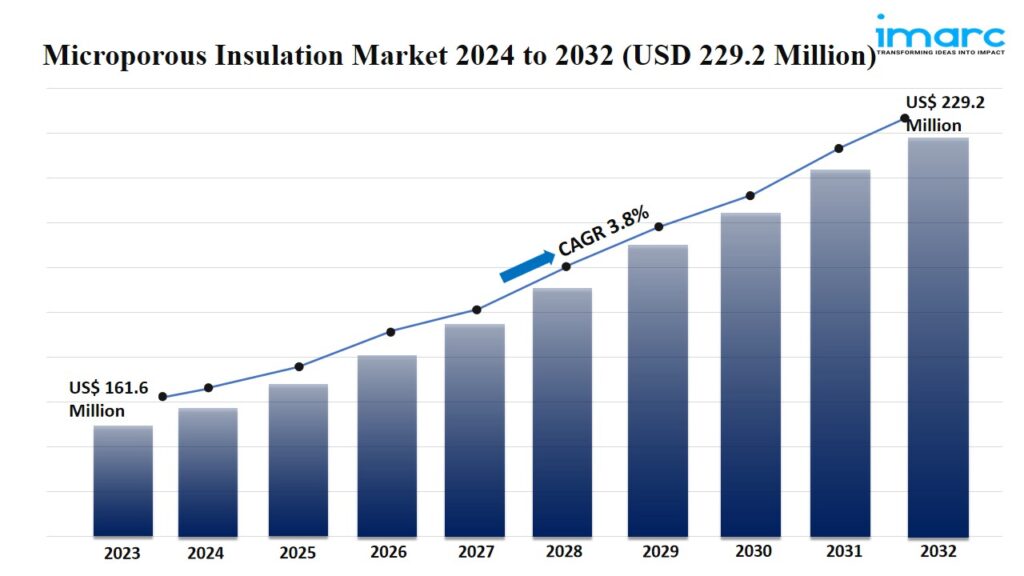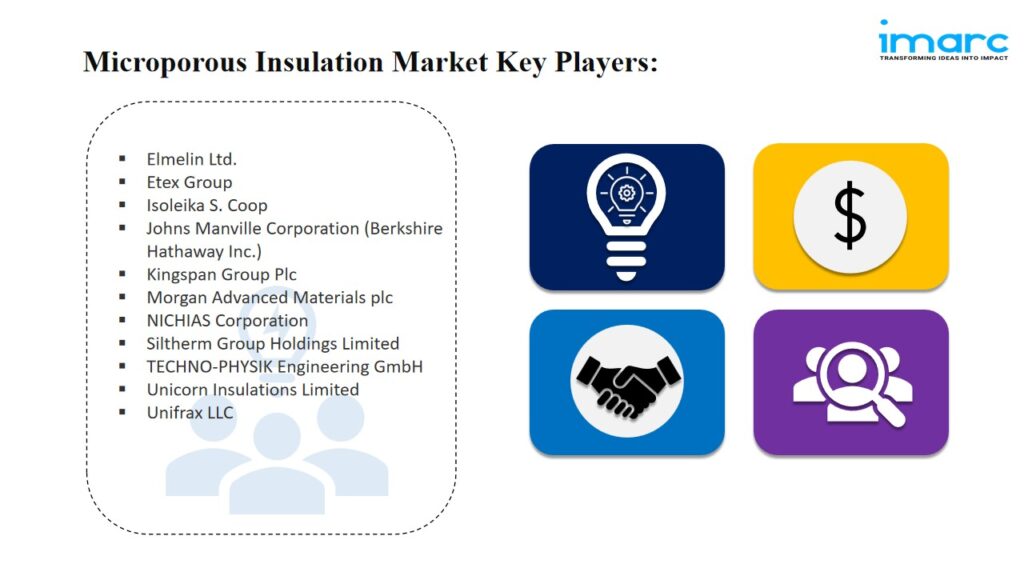
IMARC Group’s report titled “Microporous Insulation Market Report by Material (Alumina Silica, Calcium Magnesium Silicate, and Others), Product (Rigid Boards and Panels, Flexible Panels, and Others), Application (Industrial, Energy and Power, Oil and Gas, Aerospace and Defense, and Others), and Region 2024-2032“. The global microporous insulation market size reached US$ 161.6 Million in 2023. Looking forward, IMARC Group expects the market to reach US$ 229.2 Million by 2032, exhibiting a growth rate (CAGR) of 3.8% during 2024-2032.

For an in-depth analysis, you can refer sample copy of the report: https://www.imarcgroup.com/microporous-insulation-market/requestsample
Factors Affecting the Growth of the Microporous Insulation Industry:
At present, the global emphasis on energy efficiency and sustainability is becoming increasingly prominent. This heightened awareness of environmental issues and the need to reduce energy consumption has a direct impact on the microporous insulation market. Microporous insulation materials are gaining traction as a solution to address these concerns. Industries and construction sectors are seeking ways to minimize heat loss and improve thermal insulation in various applications. Microporous insulation materials are renowned for their exceptional thermal performance and low thermal conductivity. They possess the unique ability to effectively trap air within their porous structure, preventing the transfer of heat. As a result, they help reduce energy consumption, leading to lower operating costs and reduced greenhouse gas emissions.
The increasing implementation of stringent regulatory standards and building codes is supporting the market growth. These standards aim to enhance energy efficiency, reduce heat loss, and promote sustainability in construction and industrial processes. Many countries and regions are introducing regulations that mandate higher levels of thermal insulation in buildings and industrial applications. These standards often necessitate the use of advanced insulation materials to meet the specified thermal resistance requirements. Microporous insulation materials, with their superior thermal properties, are emerging as a reliable choice to achieve compliance with these standards.
The aerospace and automotive industries are witnessing a rise in the use of microporous insulation materials due to their exceptional properties and unique advantages. In the aerospace sector, where reducing weight without compromising performance is paramount, microporous insulation materials have gained prominence. Aircraft components, such as fuselages and engine components, require lightweight insulation solutions to improve fuel efficiency and overall performance. Microporous materials, with their lightweight and high thermal resistance characteristics, offer an ideal solution. They help reduce the weight of aircraft components while providing superior thermal insulation, ensuring safe and efficient operation.
Leading Companies Operating in the Global Microporous Insulation Industry:
